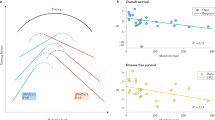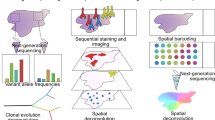Abstract:
Almost all solid malignancies exhibit complex cytological and architectural abnormalities, which vary from cell to cell and area to area within the same tumour, and between tumours of the same type. The degrees of these abnormalities do not correlate perfectly with the biological behaviour (especially growth rate and metastatic potential) among the various tumour types. These features of tumours have long been considered to invalidate simple mutational or 'abnormal gene expression' (epigenetic) theories of carcinogenesis. The 'mutator phenotype/clonal selection' hypothesis is based on the now well-established phenomenon of genetic instability of cancer cells, and proposes that this instability is an essential requirement for the development of tumours, and not an irrelevant side-effect of some other process. This paper argues that this hypothesis can provide a satisfactory explanation for the diverse histological and biological features of solid malignancies. Further, because virtually all solid tumours are histologically abnormal, genetic instability is likely to be essential for the malignant process. The concepts of mutator phenotype and clonal selection are therefore supported.
Similar content being viewed by others
Author information
Authors and Affiliations
Additional information
Received 8 April 2002; accepted 25 April 2002
Rights and permissions
About this article
Cite this article
Bignold, L. The mutator phenotype theory can explain the complex morphology and behaviour of cancers. CMLS, Cell. Mol. Life Sci. 59, 950–958 (2002). https://doi.org/10.1007/s00018-002-8482-y
Issue Date:
DOI: https://doi.org/10.1007/s00018-002-8482-y




